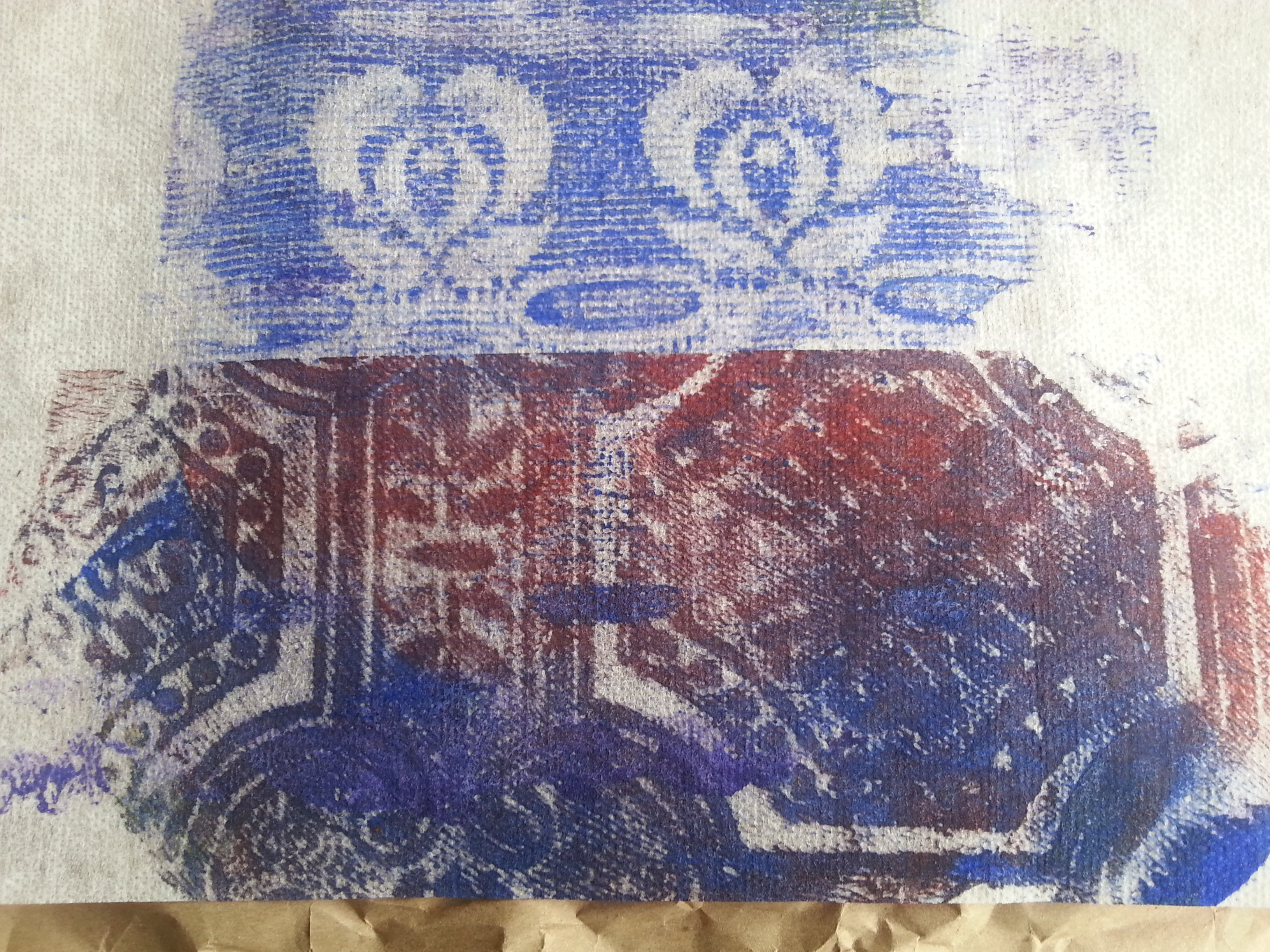For Assignment Three we conducted a feedback tutorial by Skype as this had worked well with Assignment Two. The tutor’s observations were as follows:
The assignment was experimental and there was lots of evidence of risk-taking. There were some areas for development and the sorting stage had been used well, with successful pieces picked out.
The tutor liked the way the material was tackled and the fact that learning was gained and written about relating to both successful and less successful pieces. She particularly liked the clay pieces and the felt and thought that the felting was likely to be something she could she me working on further going forwards.
We discussed the felt ‘globe’ and how objects might be embedded in the felt. We also discussed how it might have been possible to stitch into the moulded relief paste from the vase even though this was outside the scope of the course.
The tutor felt that I had done good background research, in particular in selecting artists outside the remit of the course. The writing was clear and the learning log well-structured and easy to follow. She suggested expanding my processes in describing my work; that I should use conclusions more regularly (after each exercise/material where practical).
We discussed the need to make more links between my work and how it has been inspired by the artists I have researched/exhibitions I have been to. This could be references to colour, surface or technique.
Sketchbook
The tutor liked the way that I had taken small elements of pieces to draw (the watercolour vase was one example); this is an area to explore further and develop. We discussed the need to increase the sketchbook work, perhaps incorporating blind drawing.
The tutor liked the knitted samples and how these came from the sample drawing and development. Taking the design as far as yarn sampling is a higher level of degree work, however, it is important to be more explicit as to how the sampling led to the knitted samples.
The tutors recommendations are as follows:
Pointers for the next assignment
- Reflect on this feedback in your learning log
- Use drawing and mark making more frequently in the development of your work
- Continue to take lots of risks learning from both the successful and unsuccessful
- Develop the language you use to discuss your own output and thinking
- Maintain your excellent working practices
Reflection on feedback
It was useful to know that it learning outside the course can be brought into the coursework and that it is the right approach to include both successful and unsuccessful pieces in the learning log. Writing about your own work is always difficult but I’ll be trying to be more self-analytical and expressive.
